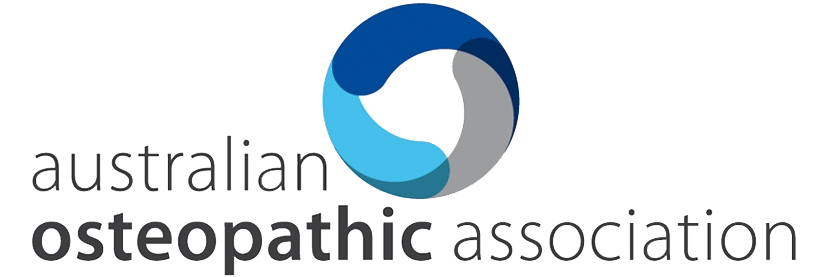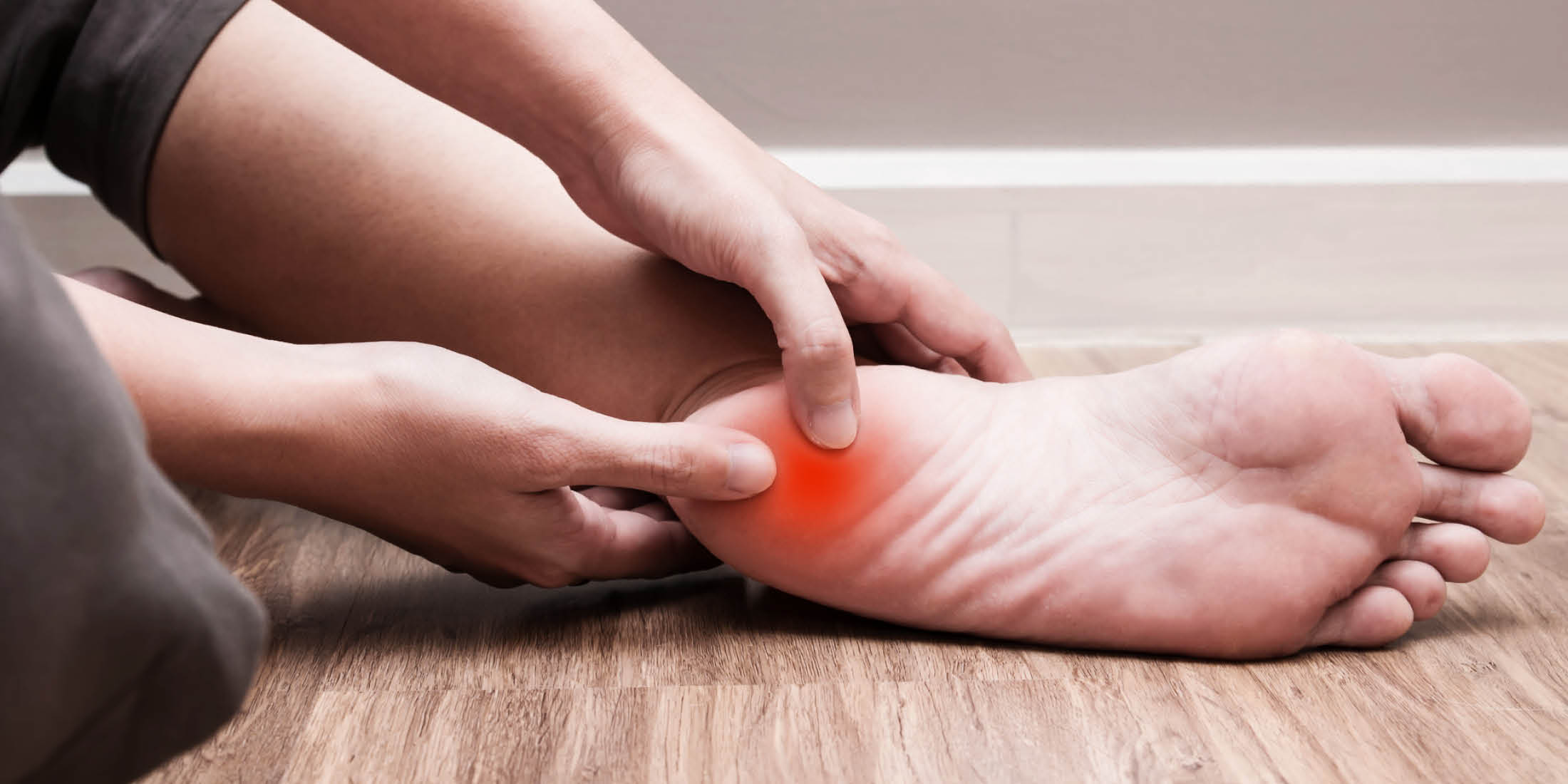
How can osteopathy help with foot, heel and ankle pain?
Sore feet can easily take the spring out of your step. Our feet and ankles play a key role in maintaining our body’s stability and supporting the weight of our body as we go about our daily activity. Whether you’re a runner, walker, or simply spend a good part of your day standing, your feet absorb the impact placed on the surrounding muscles and connective tissues.
The complexity of the ankle joint and foot bones mean both are vulnerable to strain and injury. Whether you’re foot, ankle or heel pain is from poor foot dynamics, a sprain or injury, osteopathy can treat the cause of your pain help relieve your symptoms and get you back on the road to recovery.
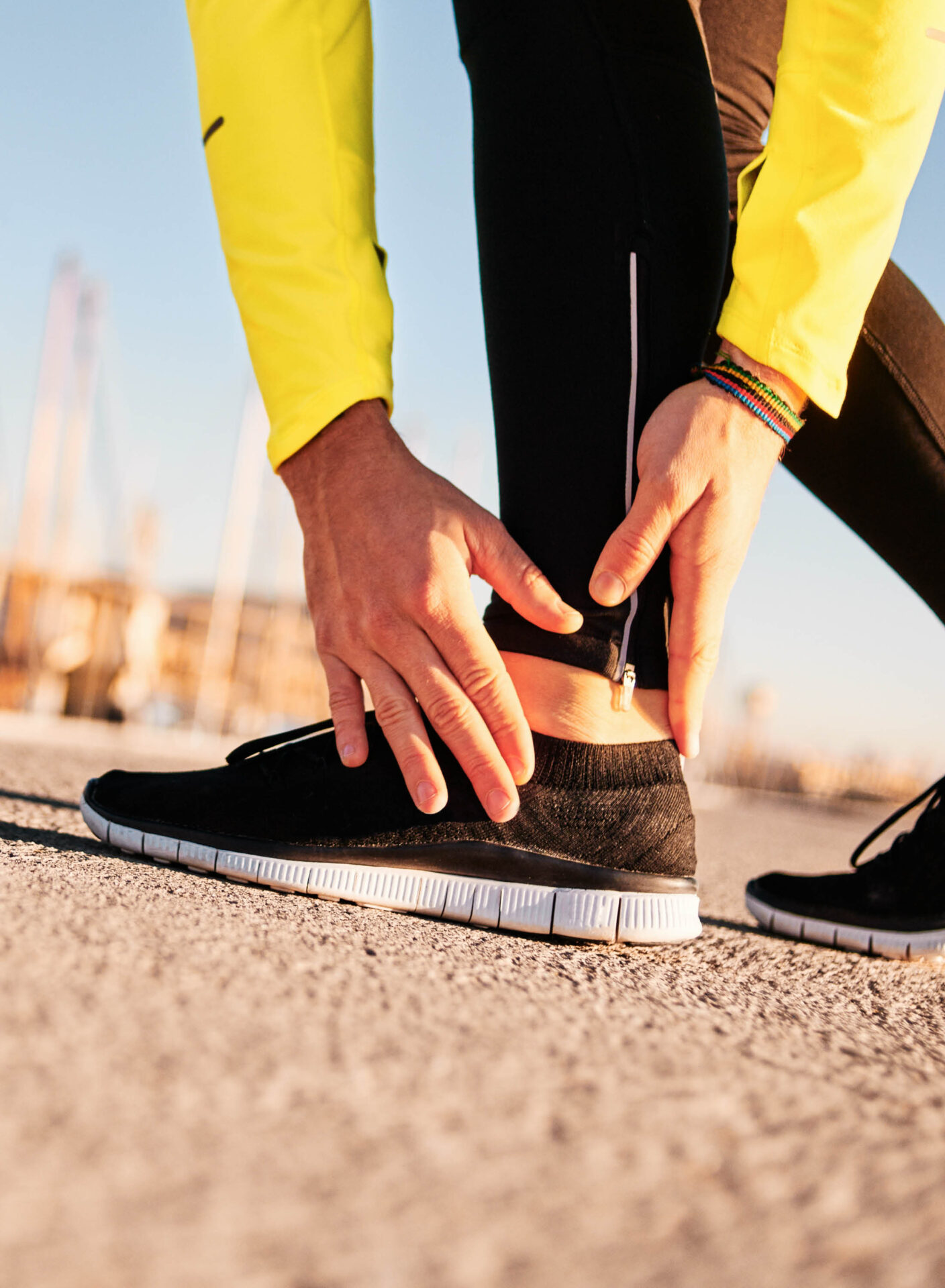
What are the common symptoms associated with foot, heel and ankle pain you should see an osteopath for?
Symptoms of foot, heel and ankle pain can present in a variety of ways. Pain can be mild, moderate or severe. Symptoms are usually felt in specific parts of the foot for example, under the arch or ball of your foot, in your heel, the ankle joint and sometimes radiate up into the shin or Achilles tendon.
Symptoms may include:
- Bruising, swelling and sharp pain in a specific area such as the heel, arch, or ankle.
- Numbness or sharp nerve pain usually felt in the toes or the ball of your foot.
- Inability to move or place weight on the joint.
- Instability in the joint and loss of balance.
What can trigger foot, heel or ankle pain?
- High impact injury from a fall or accident can result in fractures, sprains and dislocations.
- Workplace activity requiring you to be on your feet for long periods.
- Poorly fitting footwear or unsupportive shoes such as high heels or thongs.
- Poor foot biomechanics that place excess strain on the joint and surrounding connective tissues. Flat feet and high arches increase strain and reduce shock absorption.
- Sporting activity involving twisting or fast changes of direction and repetitive strain, such as running, basketball, netball, football or tennis.
- Walking, standing or playing on hard or uneven surfaces.
Common foot, heel and ankle conditions we treat at our Camberwell clinic.
Ankle sprains are one of the most common joint injuries we treat at our clinic. A sprain involves the tearing of the ligaments that connect the ankle joint and can take several weeks to heal. Osteopathic treatment can help aid faster recovery and restore strength and flexibility to the joint.
Plantar fasciitis is a common condition that causes heel pain. It’s a common complaint in middle age and by those who place regular strain on the plantar fascia, the connective tissue that runs from the heel to the ball of the foot. Osteopathy can help stretch out and strengthen the tissue and tendons to help stabilise the foot.
Achilles tendinopathy is an overuse injury impacting the Achilles tendon. It typically affects middle-aged athletes, in particular runners and may be the result of poor running technique, incorrect footwear or surface. It’s common for this type of injury to come on if you suddenly increase your training regime or change the running surface. Osteopathic treatment can aid in recovery time and help to gently stretch out the tendon with the most appropriate exercises.
If you’d like to know more about these conditions or the symptoms you’re experiencing, please give us a call.

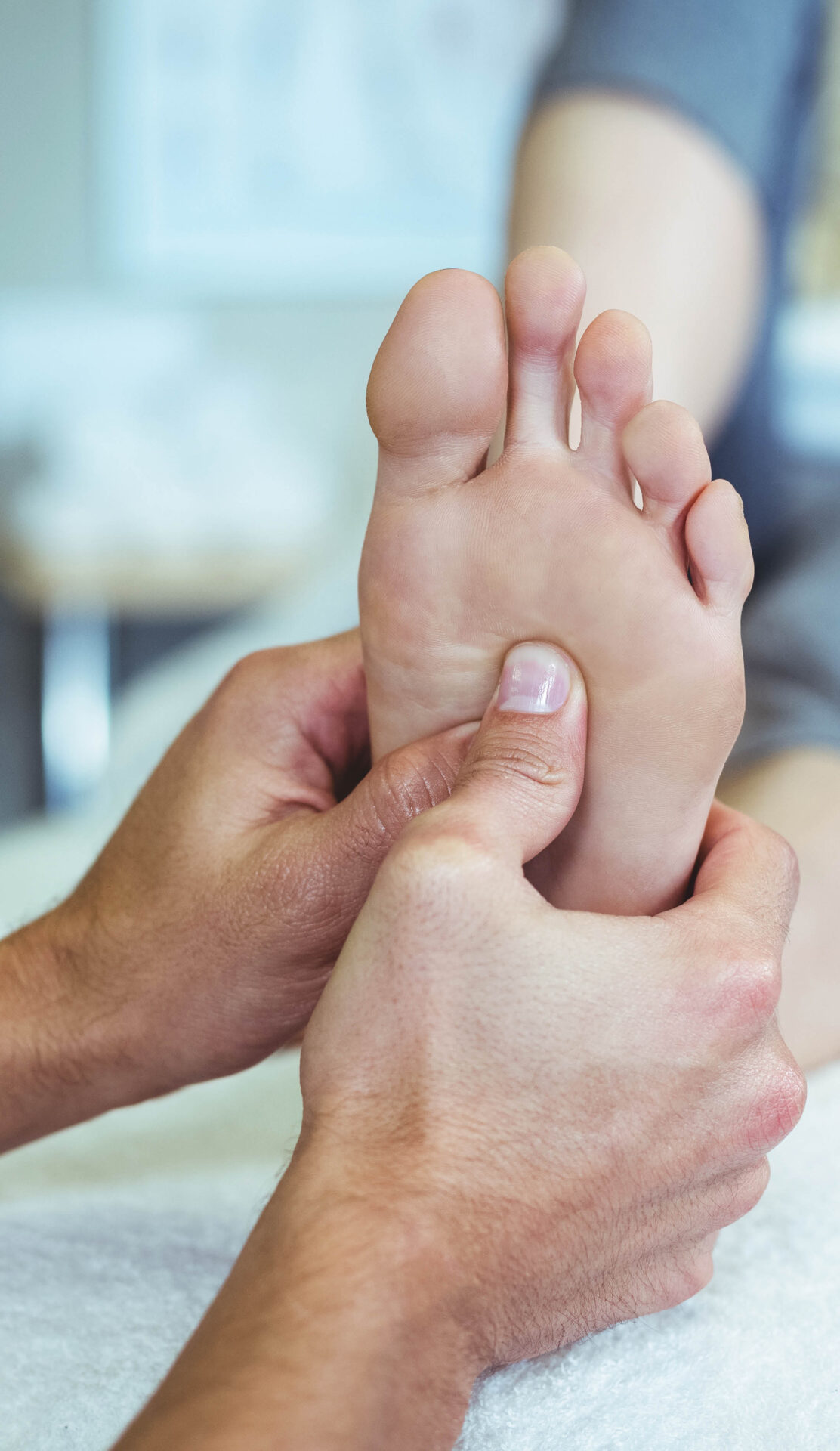
Our approach to treating and relieving your foot, heel or ankle pain?
As with all conditions, we take very personalised approach to treatment.
Our first task is to conduct a physical assessment to determine exactly what is causing your pain.
Osteopathy is a gentle, hands on treatment for foot, heel and ankle pain. Osteopathy uses a variety of techniques to alleviate muscle and tendon tension. We will match the pressure of massage and joint manipulation to your pain tolerance.
Our aim is to get you back on the road to recovery, enjoying the activities you love doing without discomfort.
Together we’ll look at your lifestyle factors and identify the activities or triggers for your pain. We’ll then work out a comprehensive recovery plan including appropriate exercises you can do at home, in between your osteopathy appointments.
What can you do in between osteopathy appointments to help relieve pain/discomfort and aid in recovery?
Should you apply ice or heat?
Cool therapy in an elevated position is the method of choice for recent foot or ankle injuries. Applying an ice pack (according to instruction) within the first 24-72 hours, for up to 20 mins can help to relieve pain, swelling and inflammation. For foot or ankle pain where there is no obvious bruising or swelling, you may find heat therapy helpful in reducing pain and discomfort. Heat packs can be applied 72 hours after injury.
Rest versus activity.
Most foot and ankle injuries require rest, elevation and support with taping or bracing for recovery. If you have a serious ankle sprain or fracture with obvious inflammation it’s important to keep weight off the foot. When you do return to activity, warming up with foot and ankle stretching can help prevent future injuries. Speak with an osteopath who can advise you on the types of activity to help successfully rehabilitate your specific injury.
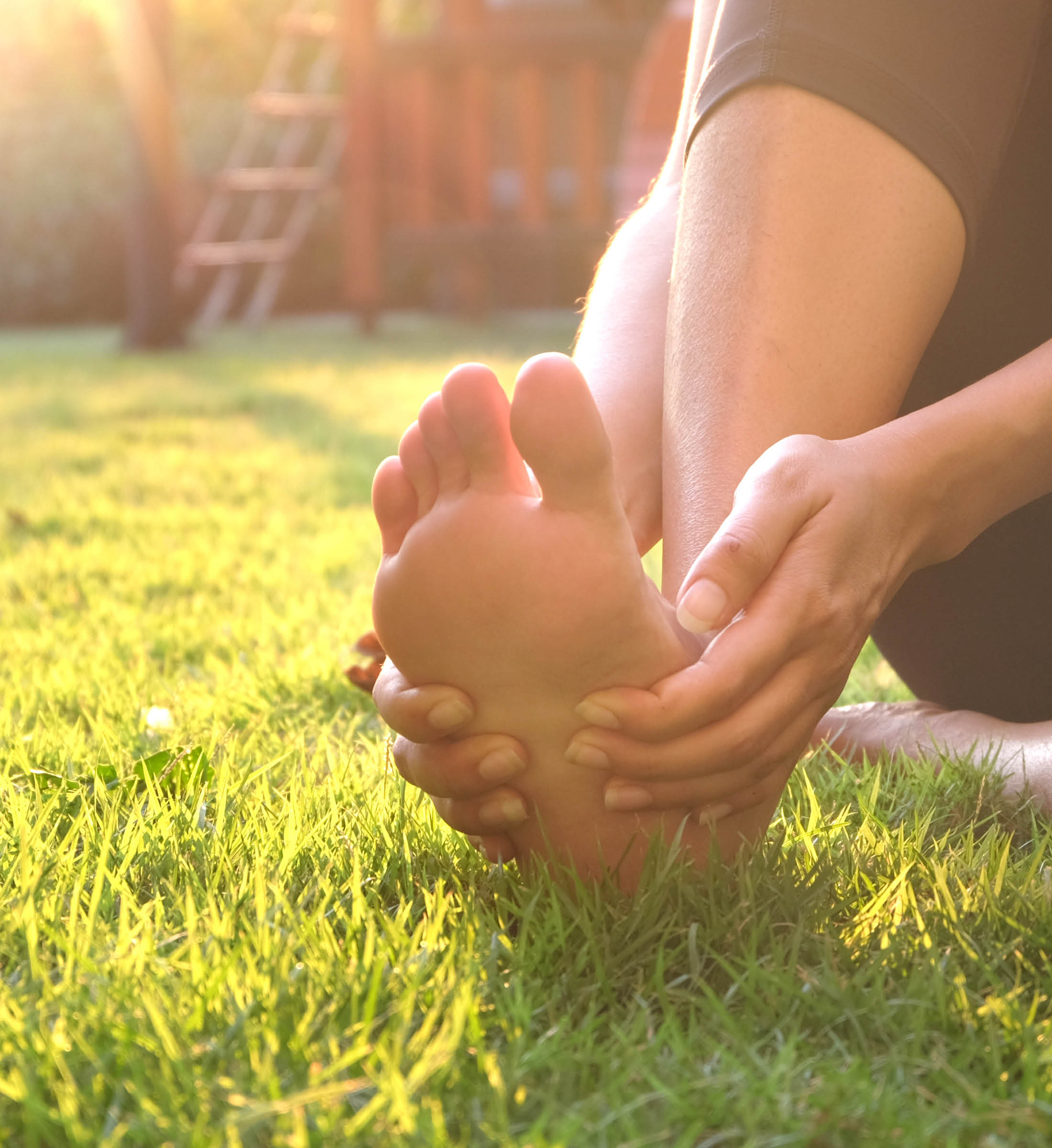
Gentle stretching to help with foot and ankle tension.
If you are experiencing mild discomfort in the foot, heel or ankle, stretching can help release stiffness and aid movement.
If you find the muscles are too tense and don’t want to release, this is when you’ll find treatment beneficial. Osteopathy helps to relax the muscles and tendons. This helps to restore movement and makes it easier and less painful to stretch.
Remember to seek advice on which activities are helpful and which should be avoided.
